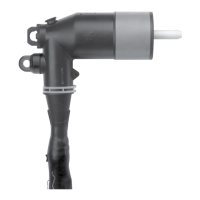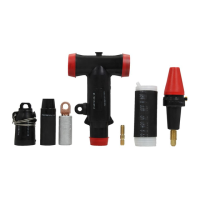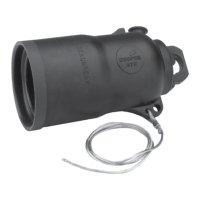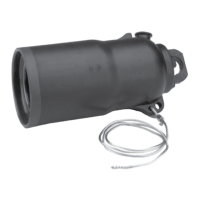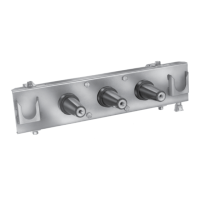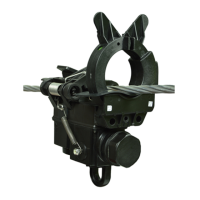2
200 A Fused Loadbreak Elbow Connector Replacement Fuse
InstallatIon InstructIons MN132021EN November 2016
Fuse Replacement Procedures
Complete current-limiting replacement fuse includes:
Current-Limiting Fuse
Two (2) Spare Set Screws
Bleeder Strap
Two (2) Probe Installation Tools
One (1) 1/8" Hex Wrench
Two (2) 3/16" Hex Wrenches
Silicone Lubricant
Installation Instruction Sheet
DANGER
Hazardous Voltage. Both sides of the fused loadbreak
elbow must be disconnected and grounded prior to
any hands-on installation or maintenance. Failure to
comply will result in death or severe personal injury and
equipment damage.
WARNING
The operator should always use personal protective
equipment (insulated gloves, clampstick and eye
protection) whenever operating the fused loadbreak
elbow. The operator should always be in the best
possible operating position, providing firm footing
and enabling a secure grasp of the clampstick, while
maintaining positive control of the elbow before, during
and immediately after operation. If there is any question
regarding the operator’s operating position, de-energize
the elbow before operation. The operator should not be
looking directly at the connector during the moment
of circuit interruption or connection. Failure to comply
could result in death or serious injury.
WARNING
Capacitive Test Point Operating Instructions: Use only
voltage indicating instruments specifically designed for
test points. Use of conventional voltage sensing devices
may provide false “No Voltage” indications.
The test point must be dry and free of contaminants
when checking for voltage. After indication is taken:
clean, dry, and lubricate the test point cap with silicone
grease and assemble to the test point.
Always consider the termination to be energized until
the test point “No Voltage” indication is confirmed by
other means. Failure to comply could result in death or
severe personal injury.
Step 1
Voltage Test Operation
The Fused Loadbreak Elbow Connector is equipped with
two integral capacitive test points that can be used to
establish whether or not the fuse has interrupted the tap
circuit. The test point on the source side of an open fuse
will indicate a voltage while the test point on the tap side
of the fuse will indicate no voltage. Both test points will
indicate a voltage if the fuse has not operated.
Step 2
Establish visible break and visible ground
Using a clampstick, isolate fuse by disconnecting the
Fused Loadbreak Elbow Connector from the apparatus
bushing and parking the Fused Loadbreak Elbow Connector
on an appropriate feedthru device. Install an insulated
protective cap on the apparatus bushing. Isolate the Fused
Loadbreak Elbow Connector on the tap-end of the fuse by
disconnecting and placing the tap-end cable termination
on an appropriate feedthru device. Install an insulated
protective cap on the tap-end apparatus bushing. Then
create a visibly traceable ground on both sides of the fuse.

